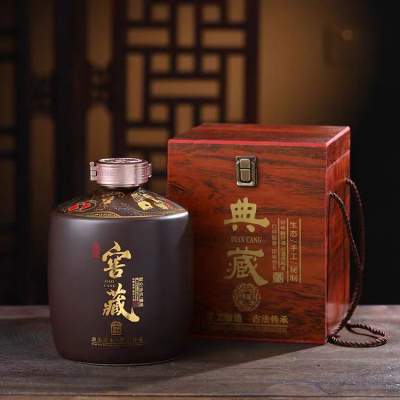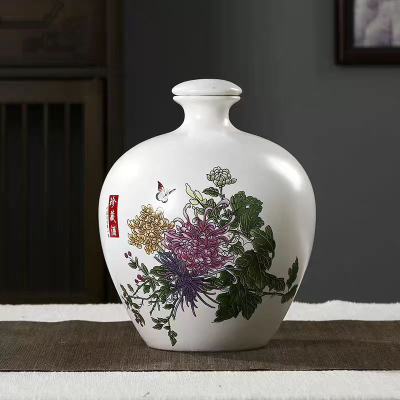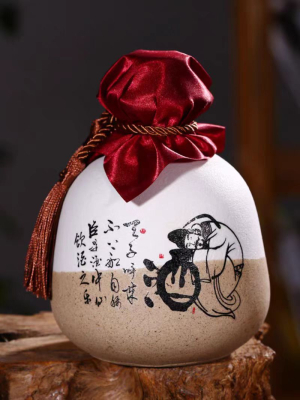White Wine
Advantages and characteristics:
1、A 10-degree wine usually refers to a chilled or slightly cooled temperature for white wine. At this temperature, the wine has a fresh, light, and dry mouthfeel. It may showcase some fresh fruity and floral aromas, with a crisp and high acidity, and a lively touch of fruit flavors. Overall, a 10-degree wine has a refreshing and pleasant mouthfeel, making it suitable for tasting during the summer or hot weather."
2、Support customization: Zhengwang baijiu Industry can meet various tastes, specifications, packaging, and personal customization, meeting various needs such as drinking and collecting.
3、Formula: The grapes for the wine are sourced from the Huanglongshan region in Shandong, where the climate is mild and the soil is fertile, making it ideal for grape cultivation. The resulting wine has a pure taste and a rich fruity aroma.
White Wine: A Comprehensive Guide to Its Origins, Types, and Perfect Pairings
White wine has long been celebrated for its crisp, refreshing taste and versatility. Whether you're enjoying a casual meal, celebrating a special occasion, or pairing it with your favorite dish, white wine offers a refreshing option for wine lovers of all kinds. This guide provides a deep dive into the world of white wine, including its history, different types, and the best ways to enjoy it.
What is White Wine?
White wine is a type of wine made from the fermented juice of white grapes. It is typically light in color, ranging from pale yellow to deep gold, and is known for its refreshing, crisp taste. Unlike red wine, which is made from dark-colored grapes, white wine is typically produced without the grape skins, which results in a lighter color and less tannin content.
The primary ingredients in white wine are grapes, yeast, and sometimes sulfites. The grapes are crushed and fermented, with the juice being separated from the skins before the fermentation process begins. This results in a cleaner, more delicate flavor profile that is characteristic of white wine.
The History of White Wine
The origins of white wine can be traced back to ancient civilizations, where it was consumed as a staple drink during feasts and ceremonies. Ancient Egyptians, Greeks, and Romans all enjoyed white wine in various forms. In fact, some of the earliest records of winemaking involve the creation of white wine from grapes that were grown in the Mediterranean region.
As winemaking techniques evolved, white wine production spread across Europe, particularly to France, Italy, and Germany, where the industry flourished. The methods for producing white wine improved over time, and today, it is one of the most popular alcoholic beverages in the world.
Different Types of White Wine
There are several types of white wine, each with its unique characteristics and flavor profiles. Here are some of the most popular varieties:
1. Chardonnay
Chardonnay is one of the most well-known and widely consumed white wines. It is known for its full-bodied flavor and versatility, which allows it to be made in a variety of styles. Depending on the region and winemaking techniques, Chardonnay can be crisp and refreshing or rich and creamy, with flavors ranging from citrus and apple to butter and oak.
2. Sauvignon Blanc
Sauvignon Blanc is a highly aromatic white wine that is known for its zesty, citrusy flavors. It often has notes of green apple, lime, and gooseberry, along with herbaceous undertones. This wine is typically light-bodied and highly refreshing, making it a popular choice for warm weather and outdoor dining.
3. Pinot Grigio
Pinot Grigio (also known as Pinot Gris in some regions) is a dry white wine that is light and crisp. It is typically less complex than Chardonnay or Sauvignon Blanc, but it offers a clean, refreshing taste with flavors of lemon, green apple, and floral notes. Pinot Grigio is often enjoyed as an easy-drinking wine and is great for pairing with seafood or light appetizers.
4. Riesling
Riesling is a white wine known for its aromatic qualities and sweetness. It ranges from dry to sweet and is often characterized by flavors of peach, apricot, and honey. Riesling is a versatile wine that can be paired with spicy foods, Asian cuisine, and even desserts due to its balance of sweetness and acidity.
5. Moscato
Moscato is a sweet, aromatic white wine that is known for its fruity flavors and low alcohol content. It typically has notes of peach, orange blossom, and honey. Moscato is perfect for those who enjoy sweet wines and is often served chilled as a refreshing aperitif or paired with fruit-based desserts.
How to Taste White Wine
Tasting white wine involves more than just drinking it—it's about appreciating the wine’s appearance, aroma, taste, and aftertaste. To properly taste white wine, follow these simple steps:
Look: Pour the wine into a glass and examine its color. A pale straw color indicates a young wine, while a deeper golden hue often signals an older wine.
Smell: Swirl the wine gently and inhale the aroma. Look for fruity, floral, or herbal scents, depending on the variety.
Taste: Take a small sip and allow the wine to cover your palate. Pay attention to the flavors—whether it’s crisp and citrusy, rich and buttery, or floral and sweet. Consider the wine’s acidity, sweetness, and body.
Finish: The finish refers to how long the flavor lingers after you swallow. A long finish is often a sign of a high-quality white wine.
Best Food Pairings for White Wine
One of the best aspects of white wine is its versatility when it comes to food pairings. Whether you're having seafood, chicken, or even a light salad, white wine can complement a wide variety of dishes. Here are some classic food pairings for white wine:
Chardonnay pairs well with rich dishes like roasted chicken, lobster, and creamy pastas.
Sauvignon Blanc is an excellent choice for light salads, goat cheese, and grilled seafood.
Pinot Grigio is perfect with light seafood dishes, sushi, and vegetable-based appetizers.
Riesling works well with spicy foods, such as Thai or Indian cuisine, as well as dishes with sweetness like glazed ham or roasted pork.
Moscato pairs beautifully with fruit-based desserts, fresh fruit, or light cheeses.
Why Choose White Wine?
There are many reasons to choose white wine over other types of wine. For one, it is often lighter and more refreshing than red wine, making it ideal for warm weather or casual occasions. Additionally, white wine offers a wide variety of flavors, from sweet to dry, and can be paired with many different types of cuisine.
Whether you're new to wine or a seasoned connoisseur, white wine is a great choice for any occasion. It offers something for everyone, from crisp and dry to sweet and aromatic, making it one of the most versatile wines on the market today.
Conclusion: The Timeless Appeal of White Wine
From its rich history to its diverse range of styles, white wine remains a favorite choice among wine enthusiasts worldwide. With its ability to complement a wide variety of dishes and its refreshing taste, white wine is perfect for any occasion, from casual gatherings to formal dinners. Whether you prefer the crisp acidity of Sauvignon Blanc, the buttery richness of Chardonnay, or the sweet, aromatic flavors of Moscato, there’s a white wine for everyone to enjoy.












